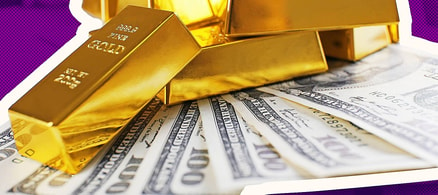The short version
- A blockchain is a digital collection of records that can't be tampered with. Cryptocurrencies like Bitcoin and Ethereum are based on a blockchain network.
- While blockchain was first used to create cryptos, companies are also using the technology to modernize sectors like health care, travel, and supply chain management.
- There are various ways for investors to invest in blockchain, including through blockchain companies, ETFs, and more.
Meet Your Retirement Goals Effortlessly
The road to retirement may seem long, but with WiserAdvisor, you can find a trusted partner to guide you every step of the way
WiserAdvisor matches you with vetted financial advisors that offer personalized advice to help you to make the right choices, invest wisely, and secure the retirement you've always dreamed of. Start planning early, and get your retirement mapped out today.
Get StartedWhat is blockchain?
In simple terms, a blockchain is a digital collection of records (a ledger, if you will) that cannot be hacked or overwritten.
In a way, blockchain is a bit like stone carvings on an ancient Egyptian wall — you can read it and you can even add to it but you can't edit what's already there.
The core idea behind blockchain is to decentralize the storage of sensitive data, so that no central authority can control, manipulate or abuse it.
If your neighbor along the Nile owes you 100 gold pieces and you store a record of your loan at the bank, well, your neighbor could bribe the bank to delete that record.
But if you carve a record of your loan into a wall in the town square, who is he going to bribe? How could he possibly tamper with the data without everyone in town knowing it was him?
That's the theory behind a public blockchain: decentralized, view-only data shared and maintained by everyone.
How does blockchain work?
So how do you create a virtual “stone wall”? How do you create a giant online ledger that's constantly being added to but can never be edited?
The answer comes from the science of cryptography (hence cryptocurrency, not “digital currency”).
As the name implies, a blockchain is made up of “blocks” of data — each one containing:
- A timestamp
- The data being recorded (bitcoin transaction, NFT owners, etc.)
- A cryptographic “hash” of the previous block
Both the timestamp and the cryptographic hash prevent the block from being duplicated or overwritten.
A cryptographic hash is like a secret passcode given to the new block by the previous block. That's what prevents your evil neighbor from messing with the blockchain. Each block is reliant on the block before it. So he'd have to edit every single block back to the genesis block.
I mean, he could. But to do so requires around 110 terawatt-hours of power — or 0.55% of global electricity production, according to Harvard Business Review.
Stop overpaying for home insurance
Home insurance is an essential expense – one that can often be pricey. You can lower your monthly recurring expenses by finding a more economical alternative for home insurance.
SmartFinancial can help you do just that. SmartFinancial’s online marketplace of vetted home insurance providers allows you to quickly shop around for rates from the country’s top insurance companies, and ensure you’re paying the lowest price possible for your home insurance.
Explore better ratesWhat is blockchain mining?
If your evil neighbor needs all that power to hack the blockchain — who's supplying that power right now?
The miners!
Mining is the process of using immense computer power to sustain a cryptocurrency blockchain. When you dedicate processing power to the maintenance and growth of the blockchain, you're automatically rewarded by the blockchain with a tiny trickle of crypto — hence the term “mining.”
Mining used to be a complex process that required deep knowledge and endless pools of power. But nowadays you can add your computer's power to a giant pool facilitated by a third-party company and reap a percentage of the profit.
If you have a powerful computer and are interested in some easy side income, check out our article on “How to start mining Bitcoin in 60 seconds.”
How is a blockchain different from a normal database?
Let's compare blockchain technology to, say, a password-protected ledger owned by a bank or other financial institution.
The former is safer in theory for two primary reasons:
- It's decentralized. No one owns or controls the data on the blockchain. Anyone can access it and validate new transactions.
- It's impenetrable. Bad guys hack into password-protected databases and leak or steal data (such as happened at Equifax). But as discussed, such a heist is not so easy with decentralized finance on the blockchain.
The main downside to blockchain is that it takes massive, massive computing power to maintain it. Thus the blockchain community is rapidly coming up with innovation after innovation to make mining more eco-friendly.
Who created the first blockchain and why?
Blockchain technology was first conceived by cryptographer David Chaum. In 1982, he published a dissertation with the best name ever: *Computer Systems Established, Maintained, and Trusted by Mutually Suspicious Groups* (PDF).
In it, he proposed that these “mutually suspicious groups” could still transact without the need of a mediating third party — using cryptographic proof.
But blockchain didn't go mainstream until 2008, when the mysterious Satoshi Nakamoto published “Bitcoin: A Peer-to-Peer Electronic Cash System” (PDF).
Here's the unofficial TL;DR (too long; didn't read):
Online payments are a pain. We need a system where third parties like banks and PayPal aren't necessary just to pay someone online. Such a system would be safer, more efficient and immune from outside influence.
Sounds idealistic, but by golly, he pulled it off. He published the Bitcoin/blockchain source code in 2009. And folks have been building on it ever since — fulfilling most of the promises of his original 2008 whitepaper.
Why is blockchain such a big deal?
The healthy, working blockchain that facilitates bitcoin transactions is a big deal but not only because it revolutionizes how we see money. It also revolutionizes how we collect, store and access data.
Think about the implications of having a digital “safe” of sensitive data that can't be duplicated or overwritten.
Votes could be stored in the blockchain to prevent certain votes from counting twice (or not at all). This helps developing nations push out corruption.
Supply chain logistics could be stored in the blockchain to ensure that the same part won't be sent twice. This saves countless billions of dollars each year.
How do companies use blockchain?
Unsurprisingly, big companies are waking to the potential of blockchain.
In 2014 only two of the world's top 100 public companies actively engaged in blockchain: PayPal and Walt Disney.
By 2021, that number rose to 81.
Microsoft, Amazon, Walmart, Visa, AT&T, Alibaba and more already use blockchain, while the rest are somewhere in research and development.
IBM especially is a big believer in blockchain technology. So much so that it has webpages explaining how blockchain will completely change a dozen industries (if it hasn't already).
Tesla may be on the fence about Bitcoin, but it's fully on board with blockchain. The EV pioneering company currently works with a blockchain company called Re|Source to trace its supplies of cobalt and nickel back to their sources in the Democratic Republic of the Congo and Australia, respectively. Blockchain technology helps them track the elements. And it also ensures that they've been sustainably mined and transported.
The list goes on and on. In most cases, companies use blockchain to optimize their supply chain or financial services.
What are some other possible implementations of blockchain technology?
Medical records
A somewhat less sexy — but undeniably pertinent — blockchain application is the storage and access of medical record data.
Speaking as a former insider, the current U.S. health information exchange model is in dire need of a refresh. And I doubt there's a hospital chief technology officer who would disagree with me. Depending on where you receive primary care, your medical record may be stored on a server with one of several dozen electronic medical record (EMR) companies or worse, on paper. And even the best of the EMR solutions are decentralized, vulnerable and inefficient. All of this impacts on patient care.
Deloitte is eager to help its clients upload patient data to private blockchain networks (so not everyone can see them). In 2016 the company won a challenge sponsored by the U.S. Department of Human Health and Services for proposing ways of “applying blockchain technology to health care to make health information exchanges (HIE) more secure, efficient, and interoperable.”
Travel
Blockchain also replaces the need for third-party travel companies. Cryptocurrency exchange Binance launched a blockchain-based competitor to Airbnb that — you guessed it — removes Airbnb from the equation. Dtravel allows hosts and renters to directly interact using a system called Decentralized Autonomous Organization (DAO).
DAO replaces humans by using a tool called a “smart contract.” A smart contract is like an executable if/then statement that lives inside the blockchain. No need to email a lawyer, a mortgage lender or in this case an Airbnb agent. Simply upload your files and the blockchain provides.
This semi-artificial intelligence eliminates the need for a customer service department… in theory.
Non-fungible tokens (NFTs)
Non-fungible tokens also use blockchain technology. NFTs use the ledger to prove who owns a particular asset, such as a meme, artwork or even designer clothing.
More: What is an NFT?
How to invest in blockchain
If you see the massive potential for blockchain, you may consider investing in blockchain technology. Here are three ways to do it, depending on your level of risk tolerance:
Low risk: Invest in blue chip stocks that focus on blockchain
A rather safe and conservative way to add blockchain to your portfolio is to add more blue chip companies that are heavily invested in blockchain technology.
One could argue that companies in the far right column above (Accenture, Nvidia, etc.) are ahead of the curve. Their aggressive implementation of blockchain technology gives them a competitive advantage, and their stock price may reflect that (if it doesn't already).
Medium risk: Invest in blockchain ETFs
Several blockchain exchange-traded funds (ETFs) exist. The largest by total assets is the Amplify Transformational Data Sharing ETF (BLOK). This fund has holdings spread across a mix of blue chips as well as blockchain-only companies like HIVE and Bitfarms.
A blockchain ETF is a convenient method of adding actual blockchain companies to your portfolio without exposing yourself to much risk.
More: How to invest in ETFs
High risk: Invest in the blockchain Itself
Believe it or not, there exists a way to “invest” in the blockchain itself.
It's called “staking.” This involves purchasing from a list of cryptocurrencies and then lending that cryptocurrency back to the blockchain. The blockchain then uses your cryptocurrency to process new data. In exchange for your loan, you get a trickle of crypto right back — around 5% APR — not unlike a conventional loan.
Staking is the next generation of mining. It uses cryptocurrency — not a wall of computer power — to validate new transactions. But don't let the steady 5% trick you into thinking it's a low-risk investment. Despite steady gains, the crypto you pay $5,000 for today could be worth $3,000 tomorrow.
For more on how to safely invest in crypto, check out “How to invest in cryptocurrency.”
The bottom line
Blockchain technology enables the safe recording, storage and access of sensitive data without the need for an intermediary or third party. Naturally, the applications are endless — digital artists can create “originals” of their work, patient data can be safely stored and accessed by providers worldwide, and more.
For investors, rapid blockchain adoption creates an exciting time to get in on the ground floor, support a new technology and bolster your portfolio.
Is blockchain perfect? No.
But hey, neither was the internet at first.
Sponsored
Follow These Steps if you Want to Retire Early
Secure your financial future with a tailored plan to maximize investments, navigate taxes, and retire comfortably.
Zoe Financial is an online platform that can match you with a network of vetted fiduciary advisors who are evaluated based on their credentials, education, experience, and pricing. The best part? - there is no fee to find an advisor.










